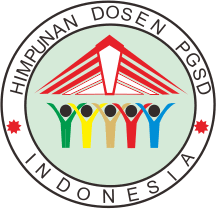Implementasi Sekolah Ramah Anak (SRA) dalam rangka pemenuhan hak-hak anak pada SMP N 3 Ungaran Kabupaten Semarang Jawa Tengah
Abstract
The objectives to be achieved in this study are to find out, (1) Abstract: The objectives to be achieved in this research are to, (1) analyze the fulfillment of Child Friendly School indicators at SMP Negeri 3 Ungaran, Semarang Regency in order to fulfill children's rights. (2) Analyzing the successful implementation of the Child Friendly School Policy at SMP Negeri 3 Ungaran, Semarang Regency. (3) Analyze school constraints in implementing the Child Friendly School Policy. (4) Analyze the efforts made by schools in overcoming obstacles to the implementation of the Child Friendly School Policy to fulfill children's rights. The results showed that SMP Negeri 3 Ungaran had met the Child Friendly School indicators with very good criteria so that the children's rights to worship according to their religion, expression according to their level of intelligence, the right to education and teaching, the right to protection from the education unit were fulfilled. The implementation of the Child Friendly School Policy in the aspects of communication, resources, disposition and bureaucracy was very successful. Internal constraints include the presence of students who have not implemented SRA commitments, complaints from teachers and the infrastructure does not meet SRA needs. External obstacles are in the form of the negative influence of the free culture of the community and the not yet optimal participation of parents in supporting Child Friendly Schools. Internal obstacles are overcome by communicating and disseminating understanding of Child Friendly Schools to both students and teachers, while external obstacles are overcome by implementing character values in online learning, often involving the police through Babinkamtipmas and communication approaches with parents and guardians.
Keywords
Full Text:
PDFReferences
UNICEF. (2008). Child Friendly Schools Manual. United Nations Children's Fund.
UNESCO. (2009). Towards Child-Friendly Education: A Toolkit for Action. United Nations Educational, Scientific and Cultural Organization.
Save the Children. (2014). Child Rights Governance: Child-Friendly Schools. Save the Children.
Nye, C., & Ota, C. (2017). Child-Friendly Schools and Classrooms: Promoting Learning, Participation, and Well-Being. Routledge.
Aitami, S., Syamsuri, S., & Setiani, Y. (2020). Implementasi Pendidikan Karakter dalam Pembelajaran Matematika. Wilangan: Jurnal Inovasi dan Riset Pendidikan Matematika, 1(1), 53-63.
Maufur. (2014). Strategi program pengembarngan sekolah ramah anak di SMA Kota Tegal dalam standar pendidikan nasional. Tegal.
Thapa, A., Cohen, J., Guffey, S., & Higgins-D’Alessandro, A. (2013). A review of school climate research. Review of Educational Research, 83(3), 357–385.https://doi.org/10.3102/00346543134 83907
Kristanto, K., Khasanah, I., & Karmila, M. (2011). Identifikasi model sekolah ramah anak (sra) jenjang satuan pendidikan anak usia dini sekecamatan Semarang selatan. Paudia: Jurnal Penelitian Dalam Bidang Pendidikan Anak Usia Dini, 1(1-20)
Assembly, G. R. (1989). Convention on the Rights of the Child. Retrieved From https://www.unicef.org/sites/default/files/2019-04/UNConvention-Rights-Childtext.pdf
Leino, M. (2011). THE CHILD FRIENDLY SCHOOL : AN IDEA VERSUS REALITY. Problems of Education in the 21st Century, 29, 82–88. Retrieved from http://journals.indexcopernicus.com/abstract.php?icid=942641
Agustino, Leo.2020. Dasar-Dasar Kebijakan Publik. Bandung: Alfabeta.
Rini, E. F., Putri, R. A., & Sinta, D.(2019). MATEC Web of Conferences 280. In Factors influencing the modal choice to access elementary school in supporting Surakarta as child friendly-city (Vol. 3022, pp. 1–8). EDP Sciences. https://doi.org/https://doi.org/10. 1051/matecconf /201928003022
A, P. R., D, S. M., J, R. M., & K, R. A. (2016). A SPATIAL ANALYSIS FOR ASSESSING THE SUITABILITY OF ELEMENTARY SCHOOL AS SOCIAL INFRASTRUCTURE AT THE NEIGHBOURHOOD UNIT SCALE IN SUPPORTING CHILDFRIENDLY SURAKARTA. Journal of Geomatics and Planning, 3(1), 33–52. https://doi.org/10.14710/geoplan ning.3.1.33-52
So, K., & Shin, S. (2012). The Design and Development of a ChildFriendly Pedestrian Environment in School Zones. Advanced Materials Research, 598(598), 156–163. https://doi.org/10.4028/www.scientific.net/AMR.598.156
Thomas, S., Jose, K. A., & Kumar, P. A. (2018). Child Friendly Schools : Challenges and Issues in Creating a Positive and Protective School Environment. In S. Deb (Ed.), Positive Schooling and Child Development (pp. 233–248). SIngapore: Springer Singapore. https://doi.org/10.1007/978-981- 13-0077-6
Prastowo, A. (2012). Panduan kreatif membuat bahan ajar inovatif. Yogyakarta: Diva Press.
Majid, A. (2007). Perencanaan pembelajaran pengembangan ttandar kompetensi guru. Bandung: Remaja Rosdakarya.
Refbacks
- There are currently no refbacks.



